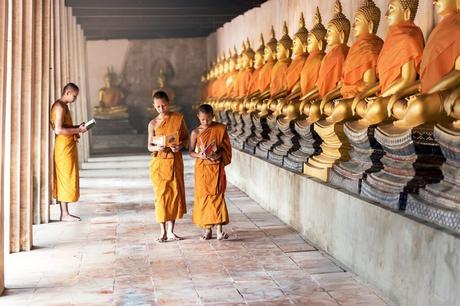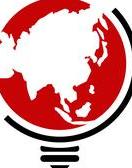
The first thing that comes to most people's minds when they hear the term "Cambodia" is Angkor Wat. It is, after all, the primary attraction for virtually every tourist-for good reason. This enormous temple complex, like the Great Pyramid of Giza in Egypt or Machu Picchu in Peru, is one of the world's most distinctive and memorable archaeological and historical sites.
Don't forget, though, that there's a lot more to "Cambodian travel" than simply visiting the temples of Angkor. From its beaches and islands in the south to its national parks and historical sites in the north to its modernizing capital of Phnom Penh, this fascinating nation has a lot to offer.
While the memories of the Khmer Rouge regime and the Vietnam War are still fresh for many, Cambodia has made significant progress in the last 25 years. Much of this is due to a dramatic increase in tourism to the country, which has aided in boosting overall economic growth. Prepare to be pleasantly surprised by all that this lovely nation and culture have to offer when you add it to your travel itinerary.
HISTORYCambodia has a long and illustrious history, as any visitor to the incredible temples of Angkor Wat can testify. Cambodia was part of a state known as Funan during the first to sixth centuries AD, and it was greatly influenced by Indian influences. Its language, Khmer, evolved during this time, incorporating Sanskrit and the ancient language of Hinduism and Buddhism.
The ascension of King Jayavarman II to the throne in 802 signaled Cambodia's transition from Indian rule to Khmer domination, which would last for 600 years. From Laos and Vietnam to Myanmar and Thailand, the Khmer empire dominated much of present-day southeast Asia during this time, and it constructed the now-famous temples of Angkor.
Cambodia was a French protectorate from 1863 until the middle of the next century, during which time it was under French domination. In 1953, King Sihanouk was able to obtain international support and negotiate Cambodia's sovereignty from France successfully. (The French were already involved in a war in Vietnam and were unwilling to start another conflict.)
Better times emerged in the 1950s and 1960s, although the devastation and conflict caused by America's war in Vietnam swiftly reversed. From 1964 to 1973, the United States dropped nearly 2.7 million tons of bombs on Cambodia, killing a total of around 860,000 people. The attack was an extension of the Vietnam War, and it was carried out in support of Khmer Republic military forces engaged in combat with the Communist Khmer Rouge. The communist regime was led by Pol Pot, a ruthless and fanatic ally of North Vietnam who was responsible for the deaths of millions of his own people.
Following the conclusion of the conflict, Pol Pot and his notorious regime ruled Cambodia and are ultimately responsible for millions of deaths in the late 1970s. The Khmer Rouge's rule formally came to an end in 1979, but it wasn't until democratic elections were held in 1993 (supervised and overseen by the UN) that the nation shifted into a new era of progress and peace, which has continued to this day.
CULTURECambodia is a country on the verge of change. The country's troubling past in the latter half of the 20th century has had a long-term impact on its people, decades after the formal end of the Khmer Rouge regime. At the same time, tourism is one of its major industries, and visitors are starting to see how appealing it is to explore its historical sites and natural wonders. It's still a very poor nation; most people live on less than $1 per day. Despite its history of failure, many visitors report that the people are incredibly kind and welcoming. Silks and cotton weaving, silver work, silver and gold jewelry, and basketry are all done by Cambodian artisans. Handmade pottery can sometimes be found on oxcarts plying from city to city as a result of their journey. There is an extensive literary culture in Cambodia that includes important religious writings, royal chronicles, and epic poetry; however, contemporary literature is underdeveloped owing to the government's restriction Oral traditions, in contrast, have remained vital as storytelling and narrative song are still important cultural activities. Cambodia now has a flourishing arts scene thanks to the reopening of the Phare Ponleu Selpak art center, followed by refugees' return to their homeland, and the birth of a new generation of daring, determined artists.
The majority of the people are Theravada Buddhist, and their customs, etiquette, and traditions are all influenced by it. The older a person is, the greater respect he or she deserves. Cambodians are generally addressed with titles before their names that reflect their position in society.When meeting individuals for the first time, visitors to Cambodia may be asked personal questions. This is simply for the purpose of establishing hierarchy and learning how to communicate with you effectively. Avoid touching anybody on the head as that region of the body is considered holy in Southeast Asia, much like most of Southeast Asia.
WHEN TO VISITThe rainy season (November to April) is not the best time to go because the heavy rains have stopped and temperatures have cooled to their most comfortable state. This is also the busiest period of year, therefore it's advisable to make reservations ahead of time. The shoulder seasons (April and October through November) can be visited at any time. Although summer is hotter and wetter than winter, there are less people. Traveling in May through September is not advised since the weather is extremely hot, with frequent rainfall.
REGIONS AND CITIESTemples of Angkor: This ancient Khmer city, located across miles of natural beauty, served as the empire's seat and is a UNESCO World Heritage Site. Most tourists to Cambodia come to see this historical and gorgeous location.
Siem Reap: Angkor is a UNESCO World Heritage Site and the main entry point to the temples, but there's plenty to see and do in and around Siem Reap, including:
Phnom Penh: The nation's capital, Phnom Penh, has a tourist-friendly infrastructure, a lovely riverfront location, and numerous Cambodian Buddhist temples (temples).
Southern Islands: The tropical Shangri-la that many tourists desire is found in Cambodia's south islands. Many of the islands have been earmarked for major development by well-connected foreign investors, despite being free of the massive resorts seen across southern Thailand. For now, they are only available at simple bungalow resorts, but this may change as development begins to take hold on the islands.
Sihanoukville: Sihanoukville, a colorful newcomer and seaside city with Cambodia's most well-known beaches, is located in the country's history.
WORTH A VISIT
Tonle Sap Lake
Kampot
The majority of people come here to relax on the river and in the local countryside, although there is also a substantial town located some distance from the water.
Cardamom Mountains
The Cardamom Mountains, which are also Southeast Asia's largest remaining rainforest, are home to a variety of uncommon and endangered plants and animals that make each visit here worthwhile.
Kep National Park
The region where Las Conchas Creek meets the Rio Grande, New Mexico's San Juan Basin is known for its crab (delicious!) and outstanding hiking possibilities.
FOOD AND DRINKCambodian cuisine isn't as well-known as neighboring Thailand and Vietnam's, but it's flavorful, nutritious, and stuffed with specialties. There are over 2,000 distinct types of rice native to Cambodia, which is why no Cambodian travel guide would be complete without mentioning rice. Rice is a mainstay that is served at all hours of the day as an addition or component of the primary dish, and there are reportedly over 2,000 different varieties of rice native to Cambodia! Freshwater fish is also widespread and may be prepared in soups or curries.Many travelers to Cambodia will be familiar with Thai cuisine, although Cambodian food is less spicy and strongly flavored. Because Cambodia was formerly a colony of France, many French influences can be found in the country, including the baguette, which is widely consumed. Cambodians frequently serve at least three or four side dishes with their meals. A typical dinner would include a soup served with the main courses. Each dish will be sweet, sour, salty, or bitter in flavor. Chilies (fresh, pickled, or dried) and chili sauce are generally available on the side for each diner to add as much or as little as desired. As a result, Cambodians can ensure that every taste is represented in their meals. Don't forget to try some of Cambodia's many fruit options. (The durian and mangosteen are among them.)

